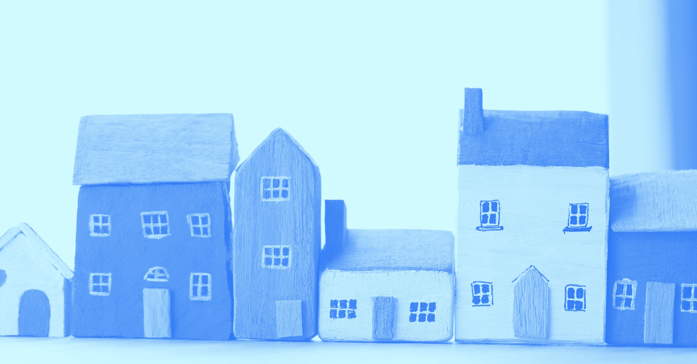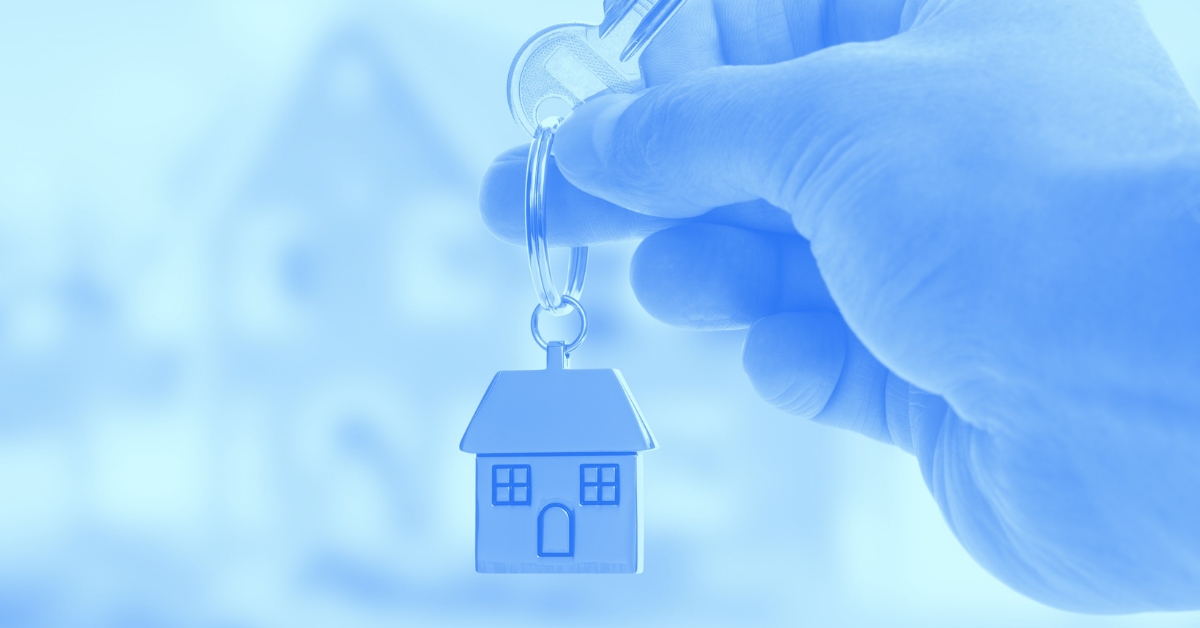4 Steps To Determine The Right Home Budget For You
Share this

8.5 MIN READ
Buying a home is one of, if not the biggest, financial decision you will ever make. However, many people buy a home without truly understanding how other areas of their life may be financially impacted. Mortgage companies may offer you a large mortgage, but that doesn’t mean it’s the right mortgage amount for you.
Whether you are buying your first home or looking to upgrade from your starter home into your dream home, it’s crucial that you fully understand how buying a home will change your financial situation.
How will this purchase impact your savings? Do you need to reduce spending in other areas? Will you still be able to travel? There are many questions that you want to have clarity on before making the purchase.
Therefore, this blog takes you through a 4-step process (using Ned and Cat Stark as example clients – shoutout to my GOT fans!) to give you a framework on how to develop your home budget to ensure that a) you can still spend on other areas in your life that you value and b) you are still saving a comfortable amount for your financial future at the same time.
Here are the details about Ned and Cat’s situation –
- They are both 36 years old with 2 kids aged 3 and 1
- They live right outside of Boston, MA with a household income of $300,000
- Their home is currently worth $600,000 with $400,000 remaining on a mortgage. They initially bought this home in 2018, but have felt like they have outgrown it. They are looking to buy a new home in the $800,000 – $1,200,000 range.
- Their top values are flexibility in their schedule to be with family, travel and investing into their health
The recommended 4-step process to help Ned and Cat identify their ideal home budget is to:
- Bring awareness to your current spending levels
- Calculate your current savings rate
- Model how different levels of home budget will impact your projected spending and savings rate
- Select the home budget and execute a plan to purchase the home
Step 1: Bring Awareness to Your Current Spending Levels
Spending is the heartbeat of your finances. It can be scary to look at it, but when you do, it will provide you with crucial information that is vital for having a healthy relationship with money.
When you bring awareness to your spending, it can provide you with two critical pieces of information that are essential when determining your home budget price range.
- How much does it cost to live your current lifestyle?
- Where is money going and how is this aligned with your values?
Now, these may seem like relatively straightforward questions, but the majority of people actually can’t answer them. Why? Because many people are worried that having this awareness can (understandably so!) bring up feelings of shame and guilt. It’s easier to close your eyes and avoid facing these numbers straight on.
Money is simply a tool that, if navigated properly, can enable you to live your ideal life. When you look at money through this lens, you can start thinking of it like a tool in your toolkit, as opposed to the dirty closet that is easier to avoid.
There are many tools like Mint.com and You Need A Budget that allow you to link your bank account and credit cards which will then pull in the various transaction data, automate the categories and allow you to reclassify expenses to make this process easier. For our clients, we use eMoney which aggregates our clients’ entire financial life (including spending) in one place.
After linking accounts into Mint.com, Ned and Cat determined that they are spending $12,000/month on average which is quite normal for working parents living in the Northeast with two kids in daycare. Now that they have this awareness, they are ready to move onto the next step.

Step 2: Calculate Your Current Savings Rate
Your savings rate is a crucial number to understand. You start by estimating what your total dollar amount of savings will be and then divide the dollar savings by your estimated after-tax income. Your total dollar amount of savings can be estimated by taking a) your gross household income and then subtracting b) your estimated taxes and c) your estimated annual spending.
Ned and Cat’s gross household income is $300,000, estimated total taxes are $104,000 and estimated annual spending is $144,000 ($12,000/month * 12 months). This equates to a total estimated annual savings of $52,000.

The estimated taxes can be difficult to calculate since the nature of your income (W-2, self-employed, etc.) and other various tax deductions will impact your estimated tax which will vary for everyone. However, you can use Smart Asset’s tax calculator as a ballpark estimate. Will this be perfect? No. But it will provide you with a starting point by factoring in a) federal income tax, b) social security tax and c) state income tax.
With an estimated $52,000 of annual savings, Ned and Cat can now calculate their savings rate by dividing $52,000 by their estimated after-tax income ($300,000 – $104,000 = $196,000) which equates to a savings rate of 27%.
We typically recommend that clients have a minimum savings rate of 20%, so Ned and Cat’s savings rate of 27% is strong and provides them with the ability to save for a variety of financial goals in the future.
Now this leads to a question – how will upgrading their home impact their savings rate?
Step 3: Model How Different Levels of Home Budget Impact Your Projected Spending and Savings Rate
The right mortgage amount isn’t what the bank will give you, it’s what you can afford to pay while still being able to spend money on other areas you value and maintain a healthy savings rate at the same time.
Ned and Cat specifically want to be sure that upgrading their current home won’t limit their ability to travel as a family, invest in their personal health and maintain the work-life flexibility they desire to be present with their family.
With clarity on both their values and their current spending, they can now model how different levels of home budget will impact their financial life. Ned and Cat are looking at houses between the $800,000 and $1,200,000 range, so they first need to estimate how much a $800,000 and $1,200,000 million home would cost on average each month, assuming they sell their current home and roll the net proceeds of $200,000 (after paying off the mortgage) into the new home.


Ned and Cat felt comfortable with a 17% savings rate if they bought an $800,000 home, especially since they anticipate their childcare expenses will go down in the future once their kids start public school which would increase their savings rate over 20%. However, their dream home costs $1,200,000 million and this would result in a negative annual savings at their current income and spending levels, so something would have to change.
This type of awareness is so valuable because it forces Ned and Cat to have deeper conversations about their values and what they would prioritize.
- Would they be willing to spend less on travel to afford their dream home?
- Would they be willing to stop paying for personal trainers?
- Could they reduce spending on other discretionary areas of their life?
- Could they increase their incomes to afford this home?
There is no right or wrong answer here – it will vary for everyone based upon their values. Ned and Cat decided that they didn’t want to change any of their current spending which meant they either had to a) wait to buy until they had higher savings for a down payment so the mortgage payment was lower or b) increase their income.
At their current income levels, the maximum amount they could spend on housing each month is about $6,000/month to still maintain the minimum 20% savings rate. This would require a $550,000 down payment on a $1.2 million home in order to keep their total monthly housing costs at the $6,000/month threshold.
This means it would take $550,000 target down payment – $200,000 current home equity = $350,000 remaining savings needed/$52,000 annual current savings (if all savings were dedicated to home) = ~7 years to have the enough cash saved up to comfortably afford the home. Were they willing to wait this long? Nope.
Therefore, Ned and Cat need to determine what level of household income was needed to a) support a $8,000/month spending on a home and b) still maintain a minimum 20% savings rate. By using a magic spreadsheet, we determined their target household income was roughly $390,000 in order to afford their dream home, a $90,000 increase from where they are now.
For them, they thought this increase in pay was possible and they started conversations with their current employer about compensation increases and began to browse for other opportunities at different companies to better understand their market pay rate.
You can see there are several variables that factor in this decision. Some you can mostly control and some you can’t control. For example, if mortgage rates decline back to levels they were at before 2022 (like their current 3% mortgage rate!), then it would lower the estimated monthly costs of the $1,200,000 home from $8,000 to $6,800 which is much closer to their $6,000/month spending target.

Without this type of awareness, you can see how you are making one of, if not the most, important financial decisions in your life without truly understanding how this impacts you.
For Ned and Cat, it boiled back to their values. They weren’t willing to jeopardize other areas of their life that were really important to them (travel, health, etc.) in order to buy a $1,200,000 new home. Therefore, they knew that increasing their income was the only way to make this purchase possible, while still being able to spend money on areas they value and have a solid savings rate at the same time.
Step 4: Select the Home Budget and Execute a Plan to Purchase the Home
When you go through this process, the next steps will be surprisingly clear. You’ll know whether you need to cut spending in other areas, reduce your home budget, increase income, or save longer for a down payment in order to afford the home you want.
Now actually making this happen can be more difficult. It’s easier said than done to reduce spending. It can take a while to increase income. Life will happen and unexpected costs will pop up. It may take you 2+ years to save for a down payment.
However, you’ll have the confidence that you are approaching this decision in a financially responsible way that is also aligned with your values, which is essentially good financial planning at its core.
If your solution is to save for a home down payment, then you can create a specific savings plan to meet your desired down payment amount. If you are planning to buy a home is less than 3 years, I highly recommend keeping this money in a high-yield savings account instead of investing in the stock market. As we’ve seen so far in 2022, the stock market can decrease very quickly and the last thing you want is for your home down payment to rapidly decrease and push your timeframe for buying a home even further back!
Key Takeaways
- Spending is the heartbeat of your finances and having awareness to how much it costs to live your current lifestyle and where money is going is critical to understand before buying a new home.
- Get crystal clear on your values and ensure your money decisions are reflective of those. If you aren’t clear on your values, you may jeopardize your ability to spend money on those areas in the future if your housing costs are too high.
- Strive for a minimum savings rate of 20% of your after-tax income at all times. If buying a new home puts you below this threshold, then alarm bells should be ringing that it may not be a financially responsible decision.
- Estimate how much your ongoing home expenses will be at different levels of home budget and how these levels of home expenses will impact your monthly budget and estimated savings. If you are interested in the “magic spreadsheet” mentioned earlier in the blog post, you can email us at jake@experienceyourwealth.com and we can share it with you.
- Focus on the variables that you can control when buying a home – income levels, spending, purchase price range and the down payment. You can’t predict when mortgage rates and housing prices will come down, so don’t let your life plans be delayed by something you can’t control.

About the Author
Jake is the Founder of Experience Your Wealth, LLC who helps
travel-loving young families that don’t buy into the “9-5,
work-until-you’re-65” concept find the responsible balance between
paying down debt, investing for the future, but also experiencing life
now.
EYW is shaking up the financial planning industry by bringing modern, life-centered financial planning advice and personal CFO-level service to its clients. They are completely remote, paperless and meet clients over Zoom with frequent guest appearances from kids, dogs, cats and whatever fun animals that may be around your home.
Did you know XYPN advisors provide virtual services? They can work with clients in any state! View Jake's Find an Advisor Portal.
Share this
Subscribe by email
You May Also Like
These Related Stories

Back to Basics: So You Want to Buy a Home ...

Good Financial Reads: Renting vs Buying a House



